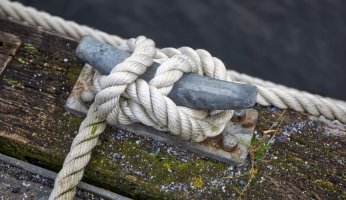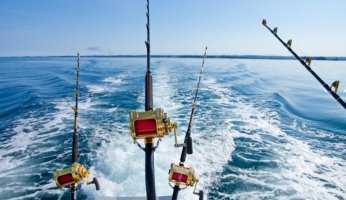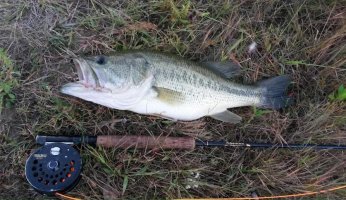Catching Smallmouth in Southern Missouri
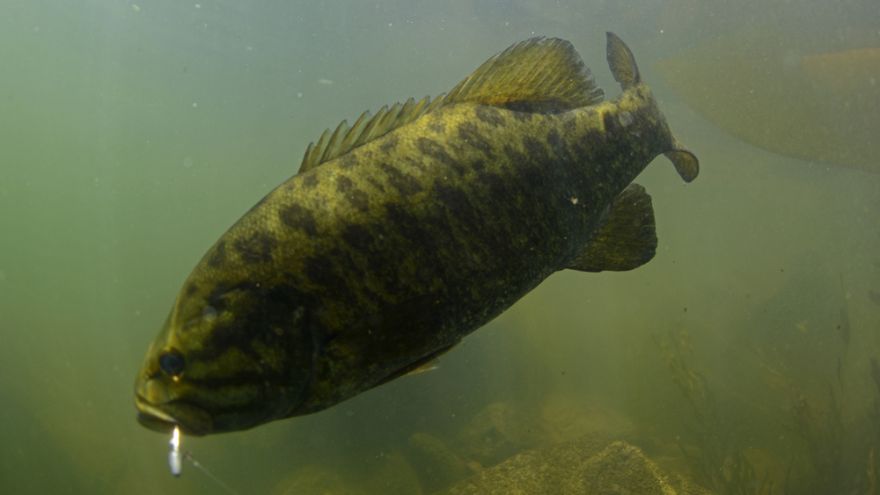 Catching Smallmouth in Southern Missouri
gearweare.net
Catching Smallmouth in Southern Missouri
gearweare.net
I grew up spending summers at my grandparents’ house in near the Arkansas border. It seemed like any time we were not working on my grandfather’s hog farm, we were on the river. In this case is was the Eleven Point River, which I find to be one of the prettiest and more undisturbed stretches of water in Missouri.
We would cruise the river on my uncle’s flat bottom boat zipping under the overhanging branches and waving at passing boats. It is one of the few ways to soak up some sun and get a breeze in your face at the same time. On either side of the river were bluffs stretching to the sky, which reminded me that I was in a different world from my home a few hundred miles away.
We would stop periodically and cast a line aiming for smallmouth bass in the crystal clear water. My uncle seemed to always know where the fish were, while I was always guessing. After we caught a bunch we would pull onto a gravel bar, get some lunch, and go swimming in the ice-cold water.
Over time my uncle taught me some tricks on how to find and catch smallmouths. Any time I catch one, I think of him for the lessons he taught me. In this article I will pass some of these tips on to you, and hopefully you can have the same success that I have had.
Table of Contents
How Structures Affect Fish Location

In the Eleven Point River, as in most rivers, you will find a variety of structures. These include logjams, points, flats, islands, and rock piles. Understanding the nature of the smallmouth bass will help determine where you cast your line.
What I mean is that structures break current. Aggressive fish will be found on the upstream side of the structure, and passive fish will be found on the downstream side of the structure. These aggressive fish are out for food, and are more likely to strike. These are the fish you want to target if at all possible.
The one primary exception to this rule is related to the wind. Sometimes with a strong wind, fish will turn to face the wind instead of facing the current. It is based on the same principle, so keep that in mind when deciding where to cast.
Reading Currents
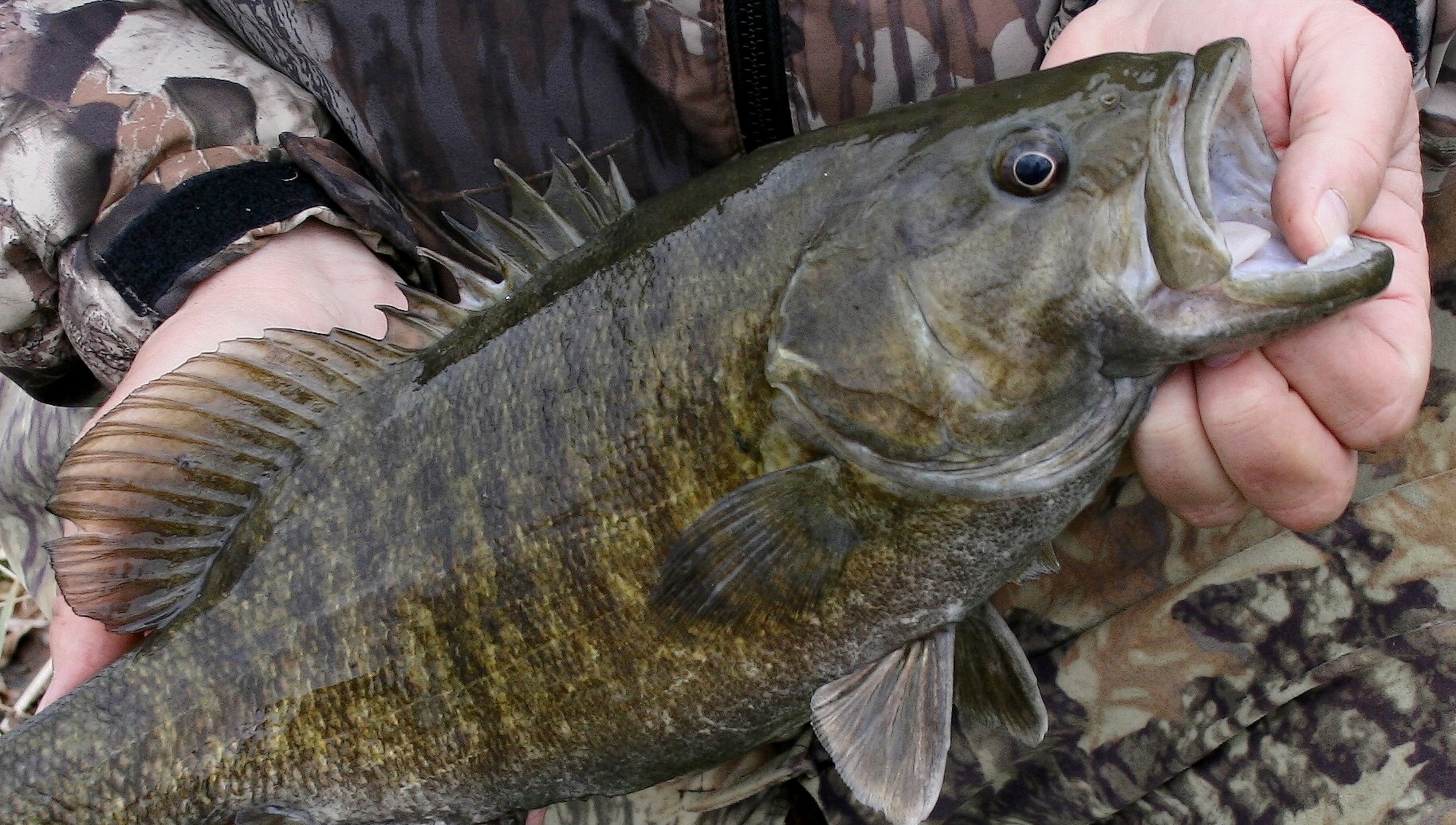
Current is a huge factor for where you will find smallmouth bass. Learning to read the current in any river is vital to finding the fish. One of the best places to look for fish is where a strong current is running over a hard surface. An example of a hard surface would be an exposed rock face or a grass bed that has been flattened by the water.
Ripples and seams in the water are indicators of structures. Again, we are looking for the upstream areas in front of these structures, so ripples and seams then give us targets for casting.
Another place to look for fish is where a strong current meets a weak current. Smallmouth bass desire a fast current to bring them food, but they often do not want to sit directly in the current. It just requires too much effort. These transitions zones are a good place to find fish, and large ones at that.
When you are new to a river, there is a trick to reading the current. On your first trip, go on a windy day. As the wind causes ripples on the surface of the water, it will show you where the current is strong and where it is weak. Then you will know the best spots when you come back in the future.
Boat Position
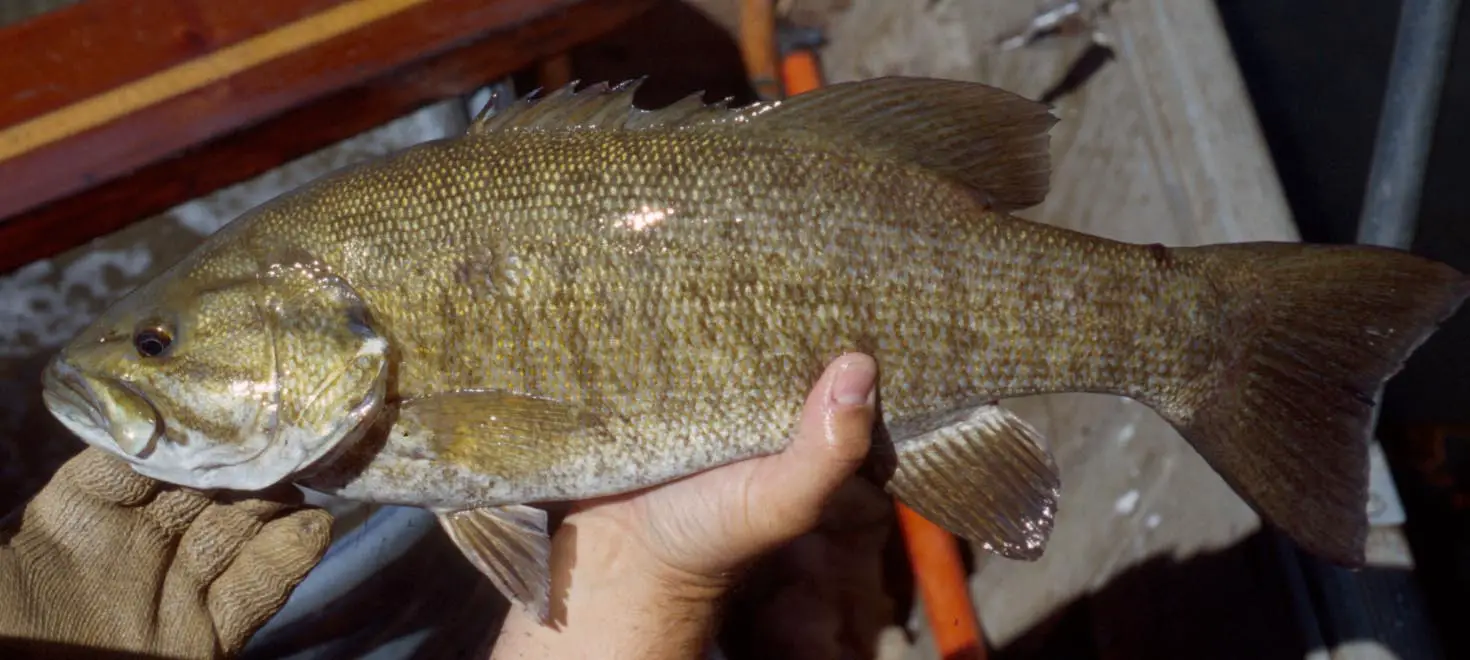
When you are fishing a river for smallmouth bass, maintaining a consistent boat position is vital. Once you find an ideal spot for casting, you need to determine how to keep your boat adjacent to that spot. It is important with smallmouth to keep tension on your line as you reel in your lure or bait.
To accomplish this, you must consider wind and current. Whichever is having the most impact on your boat position is the one you must focus on. Use a trolling motor to face your boat into that wind or current, and set the speed to keep the boat as stationary as possible. This should allow you to cast into your ideal area and maintain tension on the line.
Gear

When fishing smallmouth in a river, be prepared for a fight. These fish spend their lives fighting the current, and they have an ample supply of oxygen. This seems to make them fight harder than most fish their size. However, they have soft lips and lures can rip loose if you muscle the fish too much.
For your rod I suggest a long rod with a stiff backbone and a soft tip. This allows for flexing on the end like an ultralight, which works well for small fish and those hooked in the lip. It also allows for strength if you hook a monster or hook one in the roof of the mouth. It will bend, but will not break.
For line, go a bit heavier than normal on the strength. Many people go with a five pound test line on smallmouths, but that will not hold up to a large fish putting up a strong fight. I suggest going with closer to a ten pound test line. The last thing you want to do is successfully fight a fish and have it snap loose at the last second.
Smallmouth bass are elusive, feisty, and beautiful. When I feel like a challenge, I still head to the Eleven Point to find the riffles and rocks I fished as a child. If you can get through the initial frustration of learning the currents of your river, you too will enjoy the challenge that the smallmouth presents.





